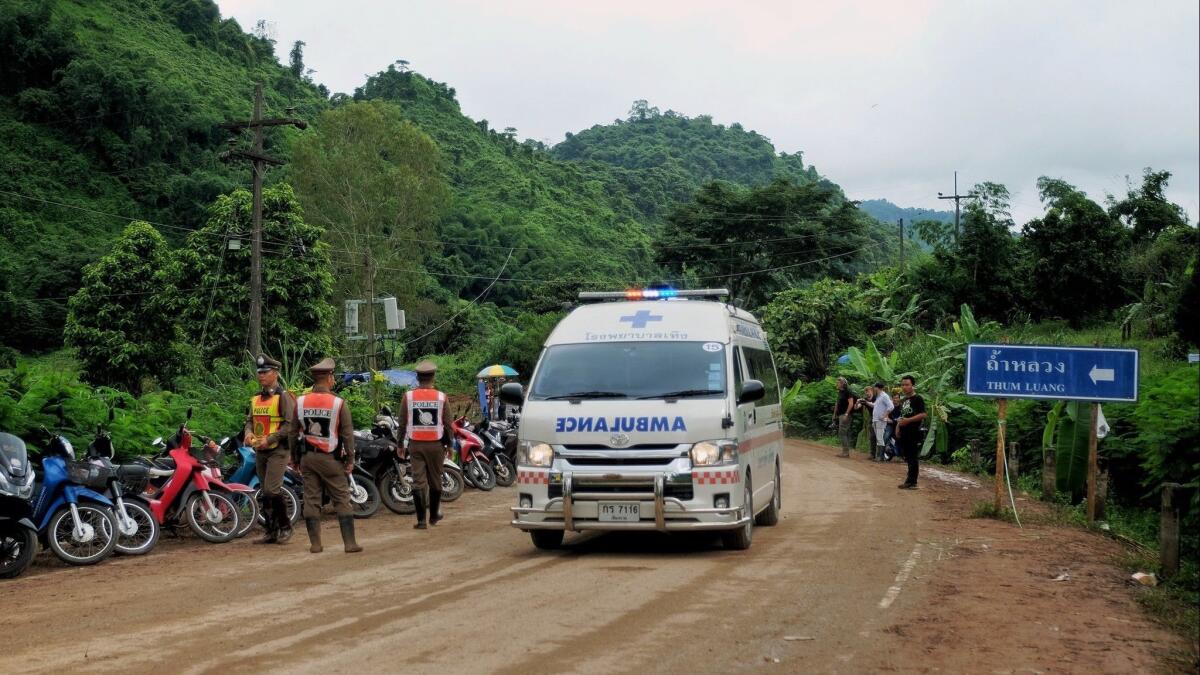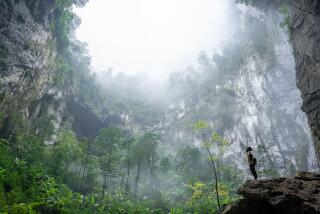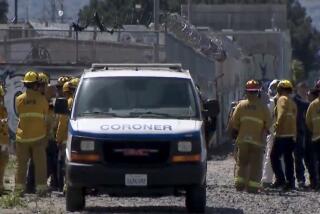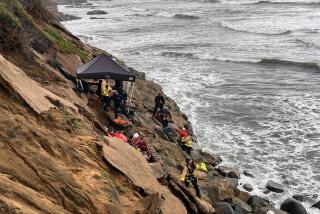Q&A: What health risks will the Thai soccer players face now that they’ve been rescued from the cave?
- Share via
The worst is certainly over for the Thai boys who have been rescued from a flooded cave after being trapped there with their soccer coach for more than two weeks. But even though they’re out of immediate danger, it may be some time before they’ve recovered from the physical and mental consequences of their harrowing ordeal.
The first four boys were brought to safety Sunday, and four more rescues followed on Monday. Officials are planning to free the last four boys and their coach in the next few days.
The rescued team members, ages 11 to 16, have been taken to hospitals in Chiang Rai, where they are under quarantine. Although medical professionals have said the boys’ overall health is good, the boys have not yet been allowed to see their families.
Thai officials have provided few details about the soccer players’ conditions. The team members had been exploring a cave on their way home from a soccer practice on June 23 when heavy rains flooded their exit route.
Experts say the boys could be coping with a variety of medical problems stemming from their weeks trapped in the cave, such as exposure to infectious diseases, low oxygen, cold temperatures and food deprivation.
Dr. Roger Mortimer is the medical director of the CMC Family Health Center in Fresno and has been an active caver for 30 years. He has been involved in cave rescue operations for 20 years and currently serves as the coordinator of the National Cave Rescue Commission’s Western region.
In an interview with the Los Angeles Times, he discussed the health challenges the soccer players and their coach might face after being removed from the cave.
Imagine you are the doctor on duty when these boys are brought in to the hospital. What’s the first thing you do?
The first thing we would do is check their vital signs, their nutritional status, their hydration status and their temperature. They’ve been underground a long time, and they’ve been diving. Are they hypothermic? We’d want to determine what kind of support we need to provide to these children.
According to Thai officials, the boys are currently under quarantine. Are there any infectious diseases they might have been exposed to in the cave?
In Southeast Asia, the thing I would be most concerned about is something called leptospirosis. It’s a disease that lives in rodents and that can be transmitted by physical contact with water that has rodent urine in it — especially if a person has scraped skin, which would be the expectation for a bunch of kids that just went caving. It is also more common during flooding situations.
People with leptospirosis may experience fever, chills, aches, reddened eyes and blood in the urine.
Anything else?
A disease called histoplasmosis would absolutely be a concern if this happened in the United States, but it is more associated with dry, dusty conditions. It is caused by a fungus that is especially associated with bat guano.
How likely are people to recover from these diseases?
Most people recover without problem from histoplasmosis, even without treatment, but treatment is required for prolonged cases.
Leptospirosis is more dangerous and requires antibiotics. With antibiotics people recover well.

These kids were in a low-oxygen environment when the rescue workers found them. Is that usually the case inside caves?
The low oxygen in this situation was because there were so many people breathing the air in a confined space.
For the most part, caves have perfectly fine air. But what happened here is that as people breathed in oxygen, they exhaled carbon dioxide. That means less oxygen to breathe, but it also means that people subconsciously feel the need to breathe a lot more.
How would that affect their health?
If the CO2 concentration in our blood rises just a bit, it drives us to breathe faster. That can make people feel short of breath and cause headaches and fatigue.
Also, as the CO2 levels get higher, they cause the pH of the blood to get more acidic. That can cause some problems of immune compromise. But once they get out into good air, that should correct itself pretty quickly.
What about being in the dark for so long — would that be a problem?
You can count on them losing a sense of time. And apparently when the divers broke through to them, the first question they asked was, how long have we been here?
It’s also a sensory deprivation environment that leads people to start hearing things and start seeing things that aren’t there. It’s very confusing.
What are the psychological effects of being trapped in a cave for two weeks?
Honestly, that’s the biggest story. These children have been through a horrible experience, have been completely out of control, and in a situation that is very literally life-threatening. They survived it, but this will mark them for life.
Once they figure out that someone died trying to rescue them, the guilt associated with that is going to add to a psychological burden that is going to be huge.
Do you have any advice for exploring caves safely?
I’ll give you three safety tips.
• Always check the water if you are entering a cave that can flood.
• Always use three sources of light and use a helmet.
• Always tell someone where you are going and when you are going to come back.
Remember, the wilderness doesn’t care about you. You have to be prepared for it.
Do you love science? I do! Follow me @DeborahNetburn and “like” Los Angeles Times Science & Health on Facebook.
MORE IN SCIENCE
North America’s first dogs were domesticated in Siberia, but their descendants are all gone
How IVF might save northern white rhinos, the world’s most endangered species
An extra dose of testosterone increases men’s preference for high-status luxury goods, study says







